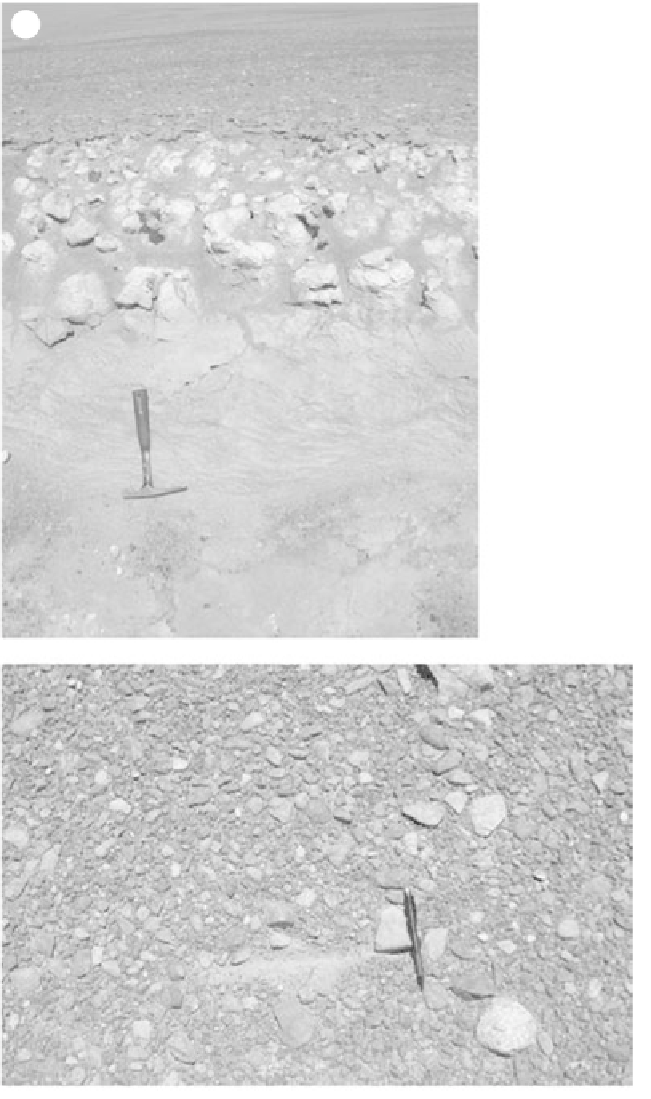Geoscience Reference
In-Depth Information
(a)
Fig. 5.17
In situ
modification of
sediments in arid environments:
(a) gypcrete development and (b)
desert pavement developed in the
Atacama Desert of Northern Chile.
In (b) note the uniformity of the main
surface clast size and dominance
of silt grade material beneath the
surface in the linear surface scrape
(light colour) to the left of the pencil.
Note also the discoloured (red oxide,
appears as light grey in the image)
base of the upturned clast lying
underneath the pencil. The darkish
colouration of most of the surface
clasts is due to the development of
desert varnish (see Oberlander
(1994) for a summary of how this
forms). Hammer is 40 cm long and
pencil is 15 cm long.
(b)
non-vascular cover (e.g. mosses, algae, lichens,
fungi, bacteria - microphytes). Where micro-
phytic crusts are developed they are typically
irregular in topography and act to break up run-
off on the surface, protecting it from rill erosion.
In some environments these crusts act as perme-
ability barriers, and increase runoff, but protect
the underlying surface. However, the impacts of
the crusts are widely variable (see the discussion
in Dunkerley & Brown 1997).




